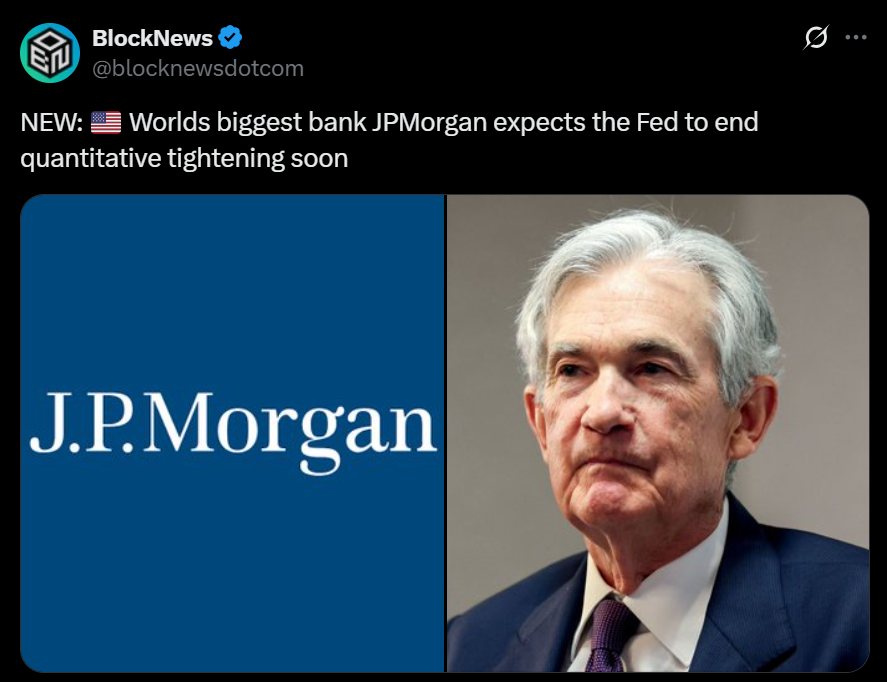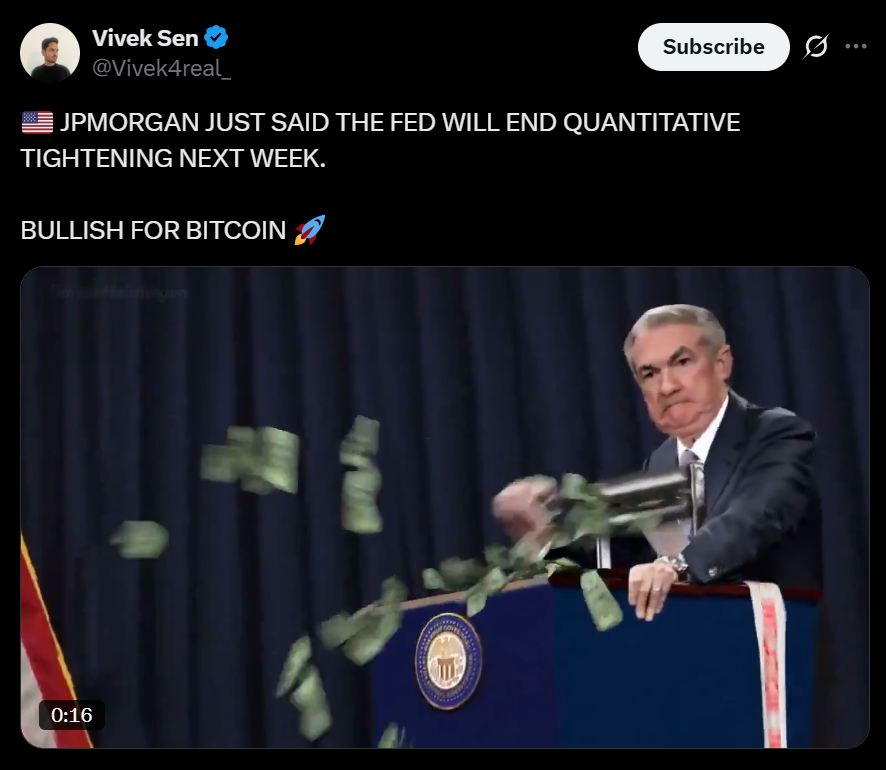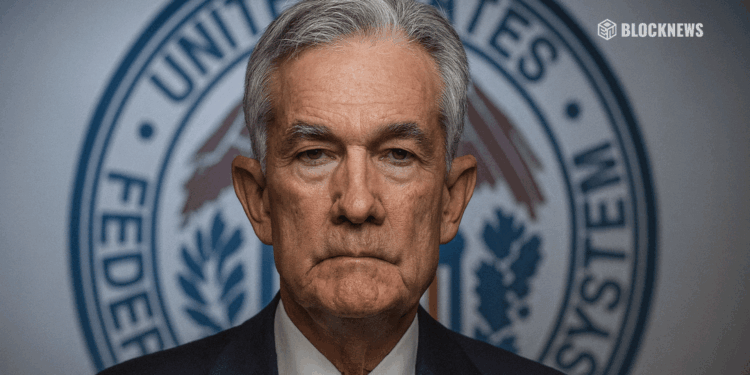- JPMorgan and BofA expect the Fed to end QT this month, citing liquidity strain.
- Powell signals bank reserves are nearing “ample” levels, hinting QT end is close.
- Funding market stress accelerates expectations for an early pivot to easing.
Strategists at JPMorgan Chase & Co. and Bank of America Corp. now expect the Federal Reserve to halt its $6.6 trillion balance sheet runoff this month, signaling an early end to quantitative tightening (QT). Both institutions revised their forecasts after a sharp rise in borrowing costs within dollar funding markets, suggesting that financial liquidity is tightening faster than expected.

Fed Likely to Address QT and Rate Cuts Next Week
The Fed is widely expected to discuss QT’s fate at its upcoming policy meeting in Washington. A rate cut to the 3.75%–4% range remains likely, but the timing of ending QT has been uncertain until now. JPMorgan and BofA’s new stance joins that of TD Securities and Wrightson ICAP, who also predict an October end, while Barclays and Goldman Sachs still expect QT to conclude later.
Fed Chair Jerome Powell has previously said QT would stop when bank reserves are “somewhat above ample” — a signal that the Fed is nearing that threshold. Powell’s latest remarks indicated this point could arrive “in coming months,” hinting at growing concern about liquidity stress in money markets.

Liquidity Stress Accelerates the Timeline
Bank of America strategists Mark Cabana and Katie Craig wrote that elevated repo rates and funding stress are signs that “reserves are no longer abundant.” Similarly, JPMorgan’s Teresa Ho cited “frictions” in the market as the Fed’s reverse repo facility continues to drain, prompting them to move up their QT end forecast.
If QT concludes in October, it would mark one of the Fed’s quickest pivots in recent cycles — shifting focus from tightening to ensuring market stability amid rising funding pressure.














